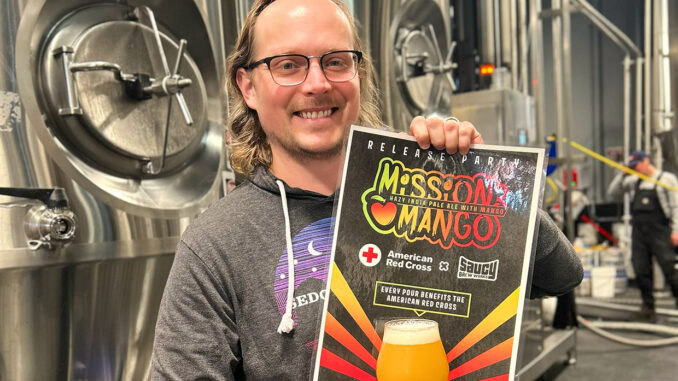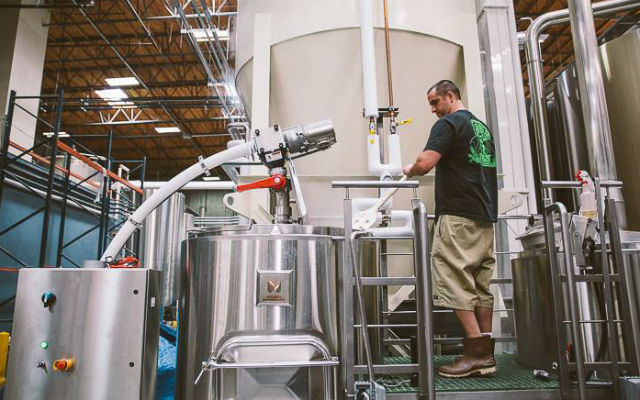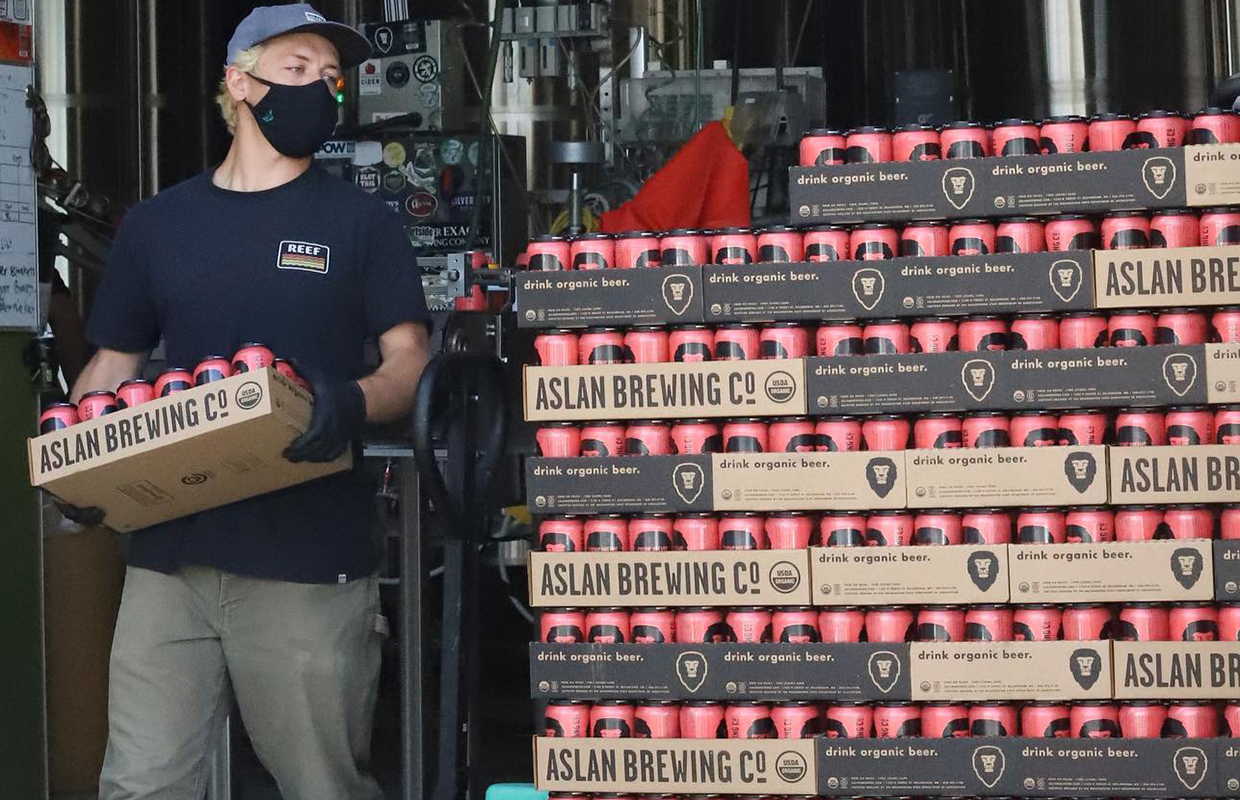
This is a part of a continuing series of Q&As with members of the brewing community from across the US. Brewer Magazine will share business and personal insights from Brewmasters, Head Brewers, Brewing Managers, Sales Directors, QCQA Managers and others each weekend to help you get to know each other better in the industry and learn more to better develop your own brand.
Eric Anderson, Chief Brewing Officer, Saucy Brew Works — Cleveland, Ohio
BREWER: How have recent challenges in your position helped make you better? What were those “pain points” and how did you solve or adjust to the issue?
ANDERSON: The craft beer segment of grocery, for a distributing brewery, is down across the board. Our team has had to work diligently to stay ahead of potential problems when it comes to budget, raw materials forecasting, and inventory turns. We’ve had to make a lot of difficult decisions to maintain our position and grow within the space. This includes a lean work force, constant audit of process and efficiency, and continuous contact with our distributor partner. Beer prices to the consumer don’t change all that much and haven’t increased commensurate with inflation and the drastic increases in raw material cost. This shrinks the already slim margin on distributed beer even more. As our economy changes, so to do consumer preferences and willingness to spend. Though craft beer appears recession proof, a better description would be recession resistant. Yes, consumers will continue to drink beer, sometimes craft sometimes macro, seltzers, RTDs or others. We’re seeing a steep increase in budget buying, and to match that we’ve introduced an IPA Variety 12-pack.
BREWER: What has been your brewery’s most recent accomplishment and how is it going to improve your business going forward?
ANDERSON: We’ve partnered with the grocery giant of Meijer to open a coffee and sandwich shop in their newest Cleveland location. Saucy Coffee opened to the public along with the new store opening on January 16, 2024 and is located by Case Western and The Cleveland Clinic. It’s been a great movement for us as a brand to create a lifestyle moment for those to start their day Saucy with coffee and end it with one of our craft beers.
BREWER: How did you start in the industry and why do you still want to be a part of it?
ANDERSON: My journey began in undergrad where I met a local brewer during a food microbiology class. After graduation (2007) I attended Siebel Institute and Doemens in Germany. I cut my teeth at BJs Brewhouse in Oxnard, California working on a 3-barrel Specific Mechanical. Since then, I’ve engineered and opened several incredible breweries. Nothing is ever the same, every day is a challenge with something new to learn. This industry has pushed me to grow professionally and personally, for that I’m very grateful and continually inspired. Turns out creating new beers comes from an unlimited creative well.
BREWER: What are you sippin’ on right now from your brewery that you really enjoy?
ANDERSON: In 2014 I created what I believe to be the first White Stout, Albino Stout at Butcher & the Brewer in downtown Cleveland, OH. Since then, I’ve moved on and have upgraded the recipe to the Saucy Brew Works’ version, Fauxbia. Each year we are a featured brewery at local grocer, Heinens. Our recent January feature was called Faux Nuts, a White Stout version of our beloved What’s His Nuts Peanut Butter Vanilla Coffee Stout. Faux is tasting absolutely incredible, big body, deceiving to the eyes, and beautifully balanced.
BREWER: Be it in styles, ingredients, business strategies or sales & marketing techniques, what are some recent industry trends that you’ve tried or are excited about trying this year?
ANDERSON: We’ve been pioneering the use of Lachancea thermotolerans since the inception of the brewery as a method of yeast-only sour beer production. It’s a small part of what we do, but we continue to push a new style of beer called “Lachancea Tart” since the resulting sour beer is very round and is only comprised of lactic acid instead of the myriad of acids lactic acid bacteria traditionally used in kettle-sours generates. We also want to bring Lachancea into the light and part of the known beer nomenclature.
BREWER: What are some adaptations to business practices in the industry that you’ve observed over these past few years, and how has your brewery adjusted to stay competitive?
ANDERSON: Evaluating scan data (IRI) the trend toward value buying is very obvious. To stay competitive, we’ve strategically added a mixed Variety IPA 12-pack. This is particularly difficult as a small brewery; sourcing packaging materials at an affordable price and with minimum order quantities has been a challenge. These are all hand packed as well, so there’s a labor and planning component. This also requires four beers, some of which never existed before, so we had to proliferate our SKUs and and brands to the portfolio.






Be the first to comment